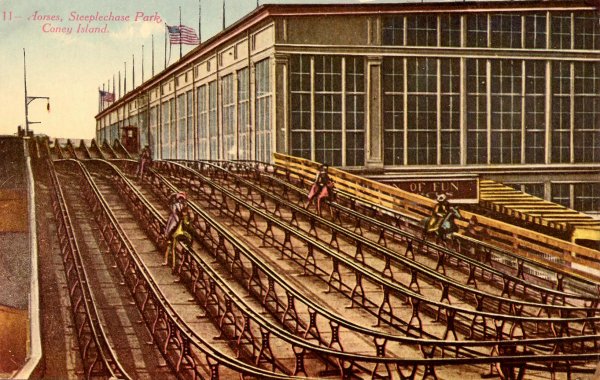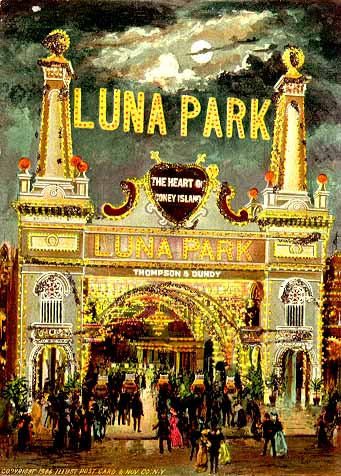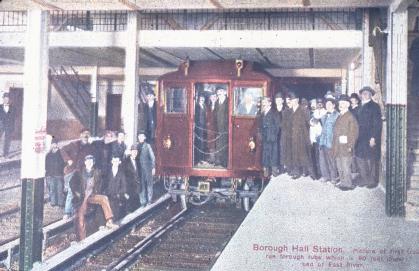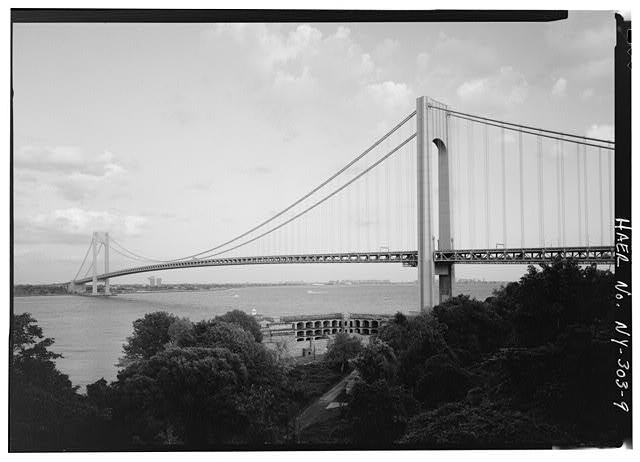| Life
in Brooklyn: 150 Years of History |
||
| Home Immigration Life in Brooklyn Assimilation Research
|
Timeline by Decade 1834: City of Brooklyn (former Town of Brooklyn) incorporated 1838: Green-Wood Cemetery incorporated 1839: Brooklyn city plan adopted; street grid mapped 1840s-1850s: First great wave of European immigration begins around mid-century, largely northern and western Europeans 1847: Atlantic Basin completed 1849: Brooklyn City (now Brooklyn Borough) Hall completed 1851: City of Williamsburgh chartered 1852: Town of New Lots, formerly part of the Town of Flatbush, organized 1855: Consolidated City of Brooklyn established, merging former City of Brooklyn with City of Williamsburgh and Town of Bushwick 1855: 47 percent of Brooklyn's population is foreign-born (compared to 51 percent of Manhattan's) Of the foreign born population, the Irish comprised 55%. 1858: National Association of Base Ball Players (NABBP), baseball's first centralized organization, formed by delegates from New York and Brooklyn; 71 teams in Brooklyn 1860: Brooklyn is third-largest U.S. city, with a population of almost 267,000 1861: U.S. Civil War begins 1863: The Brooklyn Historical Society founded as The Long island Historical Society in Brooklyn Heights; New York City draft riots break out and violence spreads to Brooklyn 1864: Brooklyn Long Island Sanitary Fair held at new Brooklyn Academy of Music to raise money for wives and children of impoverished Civil War draftees 1874: Prospect Park completed; street grids mapped for Towns of Flatbush, Flatlands, New Utrecht, and Gravesend
Currier and Ives - City of Brooklyn, 1879 (note that bridge is pictured as completed) 1880s: Second great wave of European immigration lasts into early twentieth century, largely eastern and southern Europeans 1880: Brooklyn is fourth largest producer of manufactured goods in nation 1881: The Brooklyn Historical Society opens new building on Pierrepont Street in Brooklyn Heights, still its home today 1882: Chinese Exclusion Act; repealed in 1943 1883: Brooklyn Bridge completed; Dodgers organized as minor league team in Brooklyn 1886: Town of New Lots annexed to Brooklyn 1894: Towns of Flatbush, Gravesend, and New Utrecht annexed to the City of Brooklyn: 1896: Town of Flatlands annexed to the City of Brooklyn
1897: Brooklyn Public Library formed: Steeplechase Park opens in Coney Island 1898: City of Brooklyn (Kings County) consolidated into Greater New York 1900: Brooklyn numbers 1,166,582 people 1902: Bush Terminal erects new buildings
1903: Williamsburg Bridge opens; Luna Park opens in Coney Island 1904: Dreamland opens in Coney Island
Borough Hall
Station. Picture of first train run through tube 1908: The IRT, New York's first subway, connected to Brooklyn via the Joralemon Street tunnel
Start of Brooklyn Marathon 1909 1909: Manhattan Bridge opens
Brooklyn Baseball Club - 1911 1911: Triangle Shirtwaist Company fire in NYC kills 140 young workers 1913: Ebbets Field, home to the Brooklyn Dodgers, opens 1915: Brooklyn Navy Yard builds Arizona, New Mexico, and other battleships 1915: 'Great Migration" of African Americans from America's rural South, continues through 1930s and is followed by renewed migration from the South during and after World War II 1917: United States gives citizenship to Puerto Ricans; beginning of large migration to Brooklyn and New York area 1919: Brooklyn Army Terminal completed 1920: Subway arrives at Coney Island. Prohibition starts. 1924:Immigration Act of 1924; United States enacts restrictive legislation, aimed largely at southern and eastern Europeans, which sharply reduces immigration for next forty years 1930: Brooklyn is New York City's most populous borough, population 2,560,401. 1933: Prohibition Repealed. 1936: IND (Independent) subway opens in Brooklyn 1941: Attack on U.S. naval base at Pearl Harbor triggers U.S. entry into World War II 1942: Iowa launched in record time at Brooklyn Navy Yard; U.S. Navy transforms Floyd Bennett Field, New York City's first airport, into naval air training station 1945: WWII is over. 1947: Jackie Robinson joins the Dodgers as the first African American player in the major leagues 1950: Brooklyn's population peaks at 2,738,175 1954: Ellis Island closes 1955: Brooklyn Dodgers win World Series against longtime rival New York Yankees. Brooklyn Eagle folds after 114 year run 1957: Dodgers play their last game at Ebbets Field; leave for Califomia and become L.A. Dodgers
1964: Verrazano Narrows Bridge completed, the longest suspension bridge in the world 1965: U.S. immigration laws ease; new immigrants mainly of Caribbean, Latin American, and Asian origin 1966: Brooklyn Navy Yard closes; in early 1970s City of New York and local nonprofit groups begin to transform into an industrial park. Brooklyn Heights designated New York’s first historic district 1969: West Indian/American Day Carnival parades along Brooklyn's Eastern Parkway for the first time; for many years had been held in Harlem 1970: Brooklyn Army Terminal, a military ocean-supply facility is deactivated 1976: Nation’s Bicentennial celebrated 1977: Fulton Mall built in downtown Brooklyn 1983: Centennial of Brooklyn Bridge celebrated 1990: Brooklyn remains New York City's most populous borough; population of 2,300,664 the equivalent of the fourth-largest city in the nation after New York City, Los Angeles, and Chicago. Ellis Island Immigration Museum opens. 1995: World Series banner won by Brooklyn Dodgers in 1955 is donated to The Brooklyn Historical Society by the L.A. Dodgers Source
|
![]()







